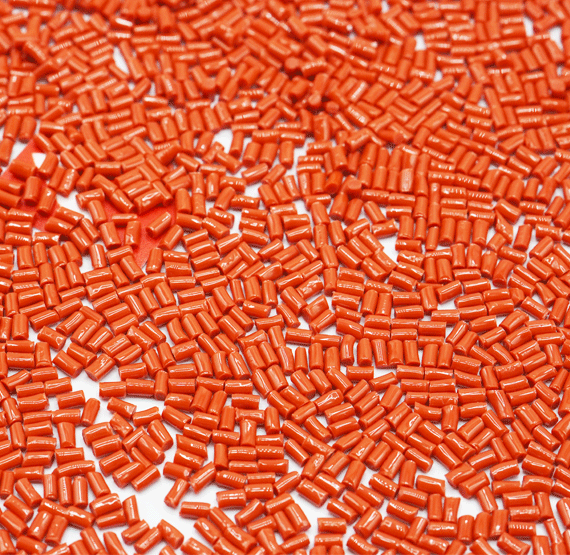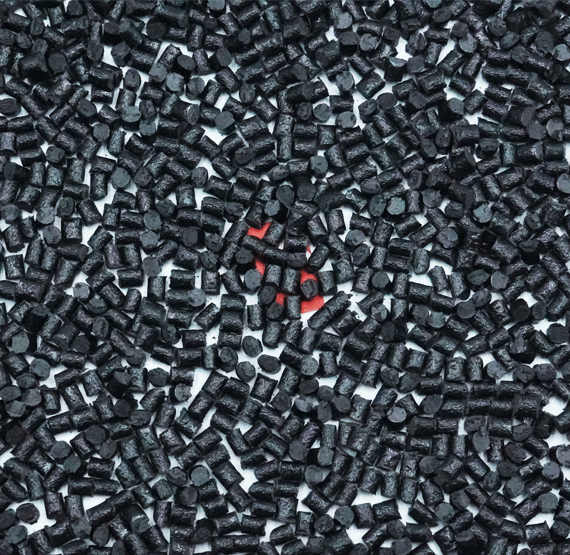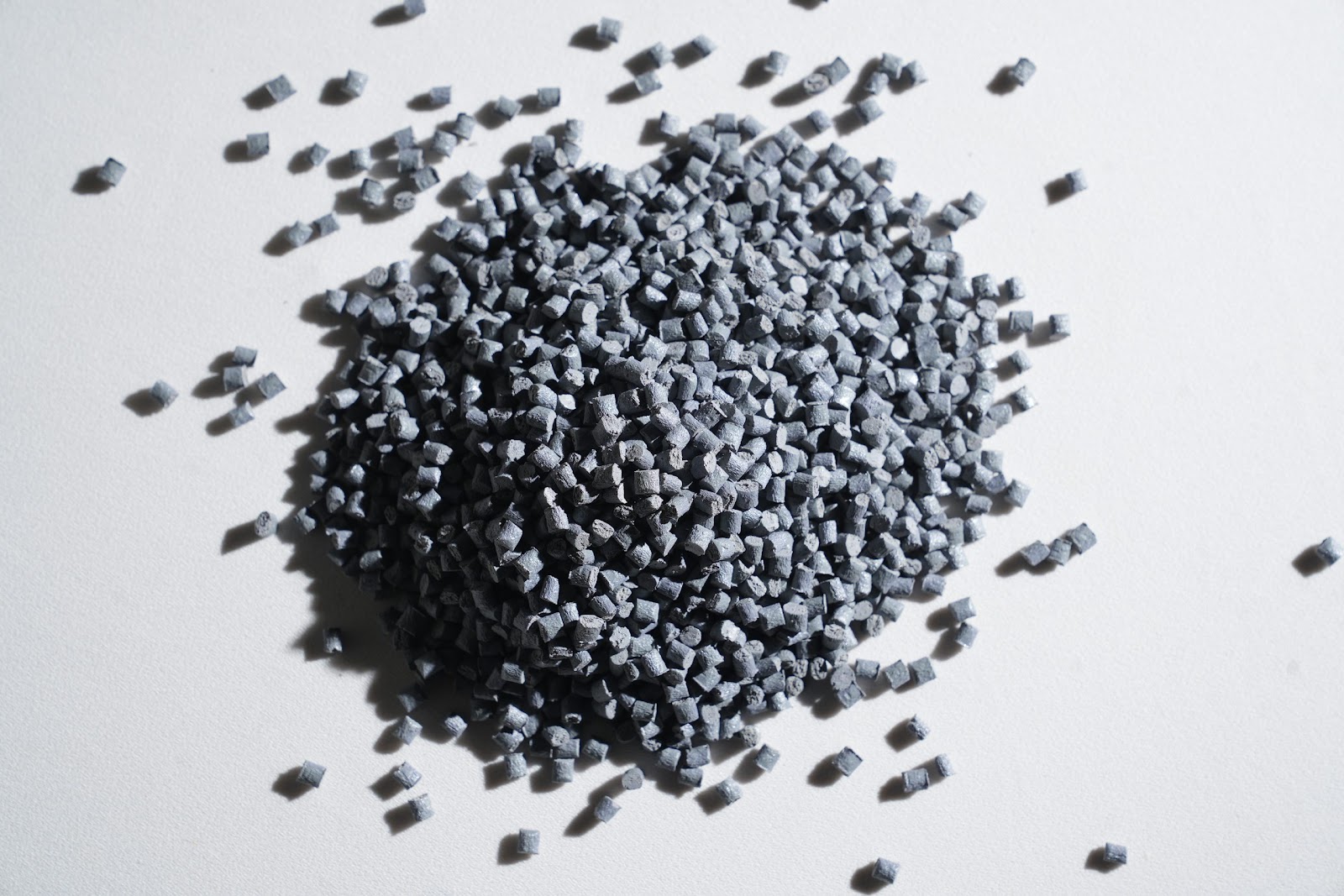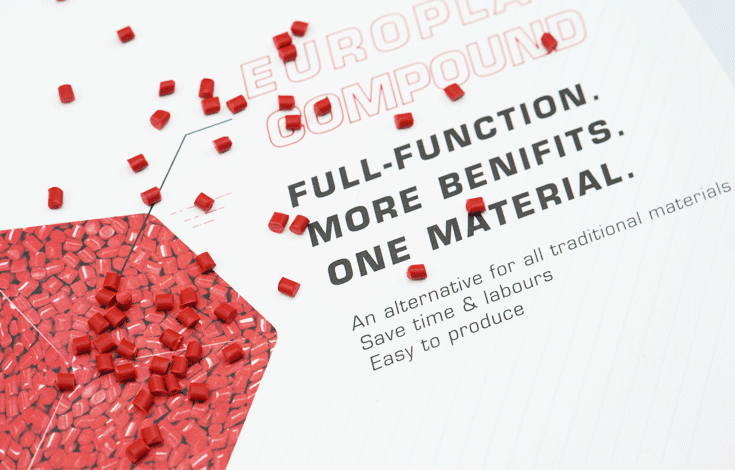Polycarbonate (PC) compounds are a class of high-performance materials that have gained prominence for their versatility, resilience, and durability. Known for exceptional impact resistance, thermal stability, and clarity, PC compounds are widely used in industries ranging from electronics to automotive, where they enhance the functionality and durability of end products. This article will introduce two types of PC compounds—PC flame retardant compound and fiberglass-reinforced PC (PC-GF) compound—that are especially beneficial in engineering applications where safety and structural integrity are critical.
1. What Are Two PC Compounds That Will Enhance Your Products?
1.1. PC flame retardant compound

PC flame retardant compound
PC flame retardant compounds are a unique variant of polycarbonate engineered to withstand high temperatures and prevent the spread of fire. These compounds are created by adding flame-retardant additives to the polycarbonate base, making them resistant to ignition while maintaining polycarbonate’s inherent toughness and transparency. In industries like electronics, where components are often exposed to heat generation, the PC flame retardant compound is invaluable for preventing fire-related hazards. This compound is also essential in applications where devices may face prolonged heat exposure, such as in battery enclosures or power tools.
PC flame retardant compounds meet strict safety regulations, making them suitable for applications requiring high levels of fire resistance. When used in consumer electronics, automotive interiors, or electrical housings, these compounds not only increase product safety but also ensure compliance with international fire safety standards such as UL94, V0, and V2 ratings. Moreover, their heat-resistant properties mean they can withstand high temperatures without warping or losing structural integrity, which is crucial for devices used in challenging environments.
Key Benefits of PC flame retardant compound:
Enhanced Safety: Reduces fire risk by preventing ignition and flame spread, which is essential for electronics and appliances.
Compliance with Regulations: Meets stringent fire safety certifications, making it suitable for sensitive applications.
Maintained Durability: Retains the mechanical and optical qualities of polycarbonate, ensuring long-term performance.
Heat Resistance: Remains stable under high temperatures, making it ideal for environments where heat management is crucial.
Applications of PC flame retardant compounds extend across industries, including electrical and electronics (for connectors, battery packs, switchgear covers), consumer goods (such as kitchen appliances and power tools), and even construction materials used in enclosed spaces. The ability of these compounds to reduce fire risk while ensuring material integrity makes them a preferred choice for manufacturers seeking safe and compliant materials for their products.
1.2. PC-GF Compound (Fiberglass-Reinforced Polycarbonate)

PC Compound
PC-GF, or polycarbonate glass fiber compound, is another highly valuable material known for its superior mechanical strength. By reinforcing polycarbonate resin with glass fibers, this compound offers enhanced tensile and flexural strength, along with improved dimensional stability. The glass fibers within the PC-GF compound act as a structural backbone, making it ideal for applications that demand high durability and rigidity.
The incorporation of glass fibers transforms standard polycarbonate into a material suitable for heavy-duty applications, such as automotive components, electrical enclosures, and durable consumer goods. In electronics, PC-GF compounds are frequently used in the manufacturing of housings for printers, cameras, and even certain types of keyboard parts. This compound’s stability and rigidity allow it to maintain its shape under high temperatures, resist impacts, and prevent warping—qualities that are essential in structural applications.
Key Benefits of PC-GF Compound:
Enhanced Mechanical Strength: Reinforcement with glass fibers increases tensile and impact strength, making it ideal for parts exposed to high stress.
Dimensional Stability: Glass fiber reinforcement reduces the risk of deformation, ensuring components maintain their precise shape and fit.
Thermal Resistance: PC-GF compounds are stable under high temperatures, suitable for applications that involve prolonged heat exposure.
Reduced Weight: Glass fiber reinforcement achieves a high strength-to-weight ratio, providing durability without significantly increasing product weight.
This compound’s versatility also extends to the automotive and construction industries. PC-GF is commonly found in applications requiring durable parts that maintain functionality under mechanical and thermal stresses, such as car interiors, structural panels, and housings for high-performance electronics. Its impact resistance and lightweight properties are advantageous in creating products that require strength without adding excessive weight.
2. Key Applications of PC Compounds You Should Know

Properties of PC Compounds
The properties of polycarbonate compounds—particularly the fireproof and fiberglass-reinforced types—make them essential in numerous applications. Here’s a closer look at some of the industries and specific uses where these PC compounds offer significant advantages:
Consumer Electronics: PC compounds are frequently used in devices such as printers, cameras, laptops, and even wearable tech housings. The PC flame retardant compound ensures safety by preventing ignition in electronics, while the fiberglass-reinforced version adds mechanical durability to housings that undergo frequent handling or potential impacts.
Household Appliances: For items like rice cookers, vacuum cleaners, and blenders, PC-GF compound offers the durability needed to withstand daily use, along with heat resistance to manage internal temperatures effectively. PC flame retardant compounds provide an added layer of safety, especially in kitchen appliances where electrical components are exposed to high temperatures.
Automotive Components: Within the automotive industry, both fireproof and fiberglass-reinforced PC compounds play a role in manufacturing interior parts, under-the-hood components, and exterior panels. PC-GF compounds offer the stiffness and dimensional stability required for car parts, while PC flame retardant compounds ensure compliance with safety standards, especially in electric vehicles (EVs) where battery protection is crucial.
Electrical and Electronic Housings: Electrical housings, switchgear covers, and battery packs benefit from the fireproof properties of PC compounds. In cases where structural integrity and fire safety are necessary, both compounds provide long-term durability, ensuring that products meet regulatory standards for high-risk environments.
Construction Materials: PC compounds are used in construction for items like transparent roofing panels, lighting fixtures, and durable wall partitions. Their high impact resistance, clarity, and fire-resistant capabilities make them suitable for both aesthetic and functional applications in building designs that prioritize safety and longevity.
Each application benefits from the unique qualities of polycarbonate compounds, whether it’s the heat resistance and flame retardancy of the PC flame retardant compound or the strength and stability provided by the PC-GF compound. Manufacturers in these industries rely on these materials to meet performance standards, enhance product safety, and ensure structural reliability.
3. Conclusion
PC compounds, specifically fireproof and fiberglass-reinforced types, represent a cornerstone in the development of products that demand resilience, safety, and versatility. Their applications span diverse industries, showcasing how engineered polycarbonate solutions address modern engineering challenges. As consumer expectations for product safety, durability, and environmental performance grow, the role of these compounds becomes even more critical.
Choosing the right PC compound for your application—whether it’s the fireproof variant for safety in electronics or the fiberglass-reinforced type for structural strength in automotive parts—will not only elevate your product’s quality but also align it with safety and durability standards. By understanding the properties and applications of these compounds, manufacturers can create robust, compliant, and high-performing products that stand up to the demands of their respective industries.
4. About EuroPlas’ PC Compounds

EuroPlas PC Compounds
EuroPlas is a leading provider of high-quality polycarbonate compounds tailored to meet the rigorous demands of modern manufacturing. Our PC-GF compound, a blend of polycarbonate resin reinforced with glass fiber, is designed to deliver enhanced tensile strength, impact resistance, and thermal stability. These properties make it suitable for various high-performance applications, ensuring that your products remain durable, reliable, and safe.
Features of EuroPlas’ PC-GF Compound:
All-in-One Solution: Combines multiple performance benefits in a single material, including heat resistance, impact strength, and stiffness.
Ready for Use: Can be directly processed without the need for additional materials, simplifying the manufacturing process.
Customization Options: Offers tailored glass fiber ratios, allowing for specific mechanical and thermal properties to meet individual product requirements.
Enhanced Performance: Increases the stiffness, thermal capacity, and impact strength of end products, making it ideal for high-stress applications.
EuroPlas’ PC Flame Retardant Compound (PC-FR)
Our PC-FR compound is engineered from polycarbonate resin mixed with halogen flame retardants to meet stringent safety requirements. EuroPlas offers a range of fireproof levels per the UL94 standard, including 5VA, 5VB, V0, V1, and V2. This compound is designed for applications demanding enhanced safety features, such as mobile chargers, keyboards, power sockets, electronic components, and earphones.
Key Features of EuroPlas’ PC-FR Compound:
Comprehensive Functionality: Delivers flame retardancy, impact strength, and stiffness in one material.
Ready for Immediate Processing: Requires no additional materials, making it convenient for manufacturers.
Tailored Safety Levels: Available in a variety of UL94 fireproof levels, adaptable to specific product requirements.
Optimized for Performance: Enhances stiffness, thermal capacity, and impact strength, ideal for applications needing heightened safety and durability.
With EuroPlas’ PC compounds, your products benefit from the latest advancements in materials science, backed by a commitment to quality and innovation. Our customizable compounds are designed to meet specific needs, ensuring that every application receives a material that’s not only durable but also optimized for the best possible performance. Explore EuroPlas' solutions to find the perfect compound for your products’ requirements, and bring safety, durability, and efficiency to your designs.
Looking for PC compound solutions? Visit our Contact Us page to learn how EuroPlas can help your business thrive.